How School-Based Support Promotes Independence in the Classroom
Fostering Self-Reliance Through Systemic Educational Strategies
A Holistic Approach to Building Student Autonomy
Student independence is a vital aspect of effective education, preparing learners for future challenges both academically and in life. Schools play a critical role in fostering independence by implementing comprehensive support systems, creating engaging learning environments, and employing evidence-based practices. This article explores how school-based support promotes student autonomy and self-reliance, emphasizing strategies that accommodate diverse needs and promote lifelong skills.
The Role of School-Based Support Systems in Promoting Independence
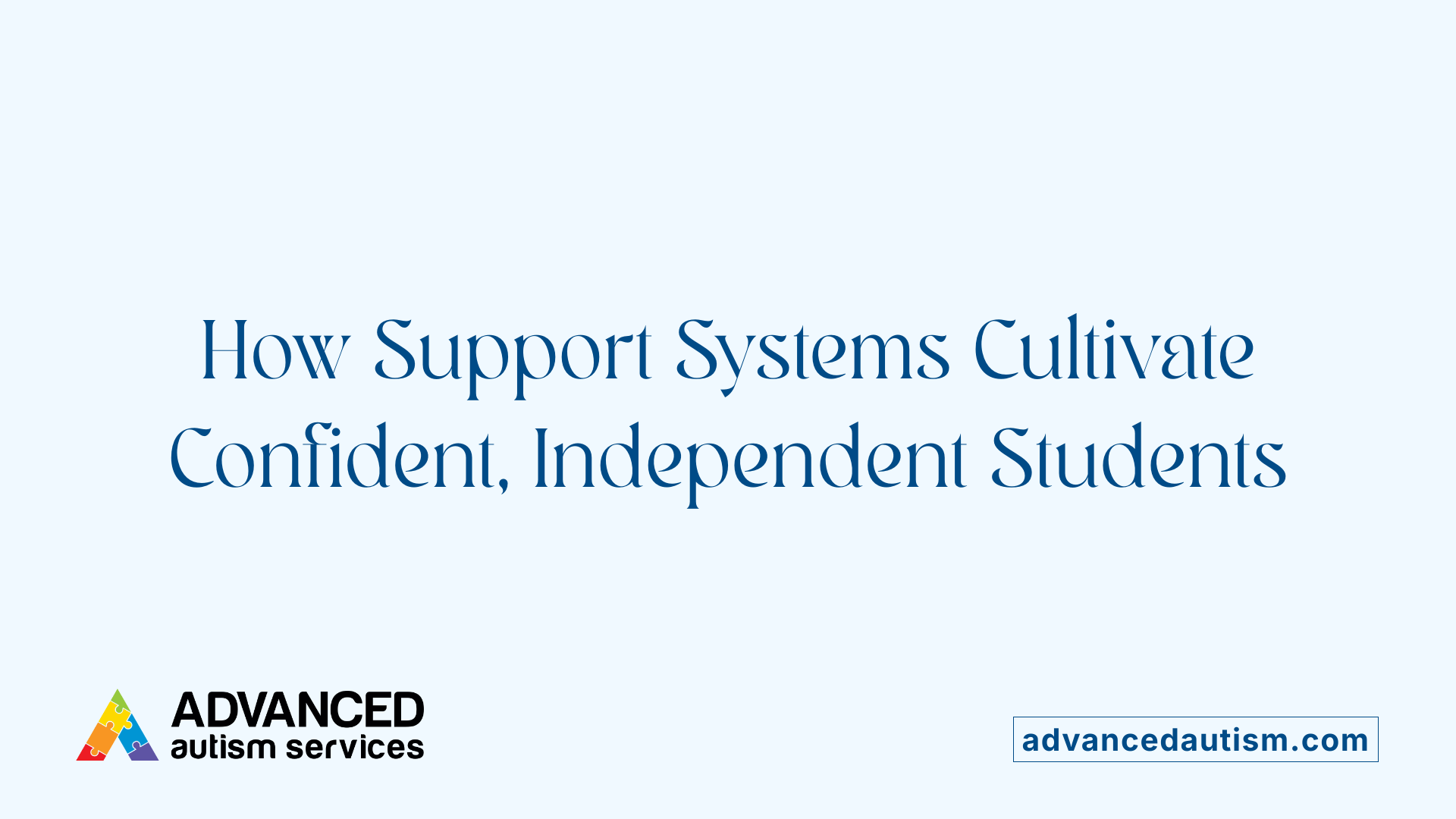 School-based support systems are fundamental in helping students develop independence and resilience. These systems include relationships with supportive adults—teachers, counselors, and mentors—who serve as consistent sources of guidance and encouragement. By fostering strong, trusting relationships, schools create safe environments where students feel valued and understood. This connection not only helps students manage social-emotional challenges but also builds their self-esteem and motivation to take initiative.
School-based support systems are fundamental in helping students develop independence and resilience. These systems include relationships with supportive adults—teachers, counselors, and mentors—who serve as consistent sources of guidance and encouragement. By fostering strong, trusting relationships, schools create safe environments where students feel valued and understood. This connection not only helps students manage social-emotional challenges but also builds their self-esteem and motivation to take initiative.
Implementing trauma-informed and relationship-centered practices is essential. Such approaches recognize the impact of adversity on learning and behavior, promoting a supportive atmosphere that reduces stress and fosters emotional regulation. As a result, students are more likely to engage actively in their education and develop self-reliance.
Collaboration between educational institutions and child welfare agencies further enhances independence. When these entities work together, students benefit from consistent placements, access to essential resources, and tailored interventions. This integrated effort minimizes disruptions to learning, supports smooth transitions, and encourages autonomous decision-making.
Mentorship and advocacy programs also play a vital role. These initiatives connect students with caring adults who serve as role models and advocates, helping students build practical skills and navigate complex life decisions. Whether through tutoring, leadership clubs, or advocacy groups, these programs foster a sense of community and self-efficacy.
Overall, school support systems that integrate relationship-building, trauma-informed care, cross-agency collaboration, and mentorship strategies are instrumental in cultivating environments where students can thrive independently. By strengthening social-emotional skills and providing consistent guidance, these systems empower students to become confident, self-sufficient individuals capable of managing their educational and personal journeys.
Classroom Strategies and Practices to Cultivate Autonomy
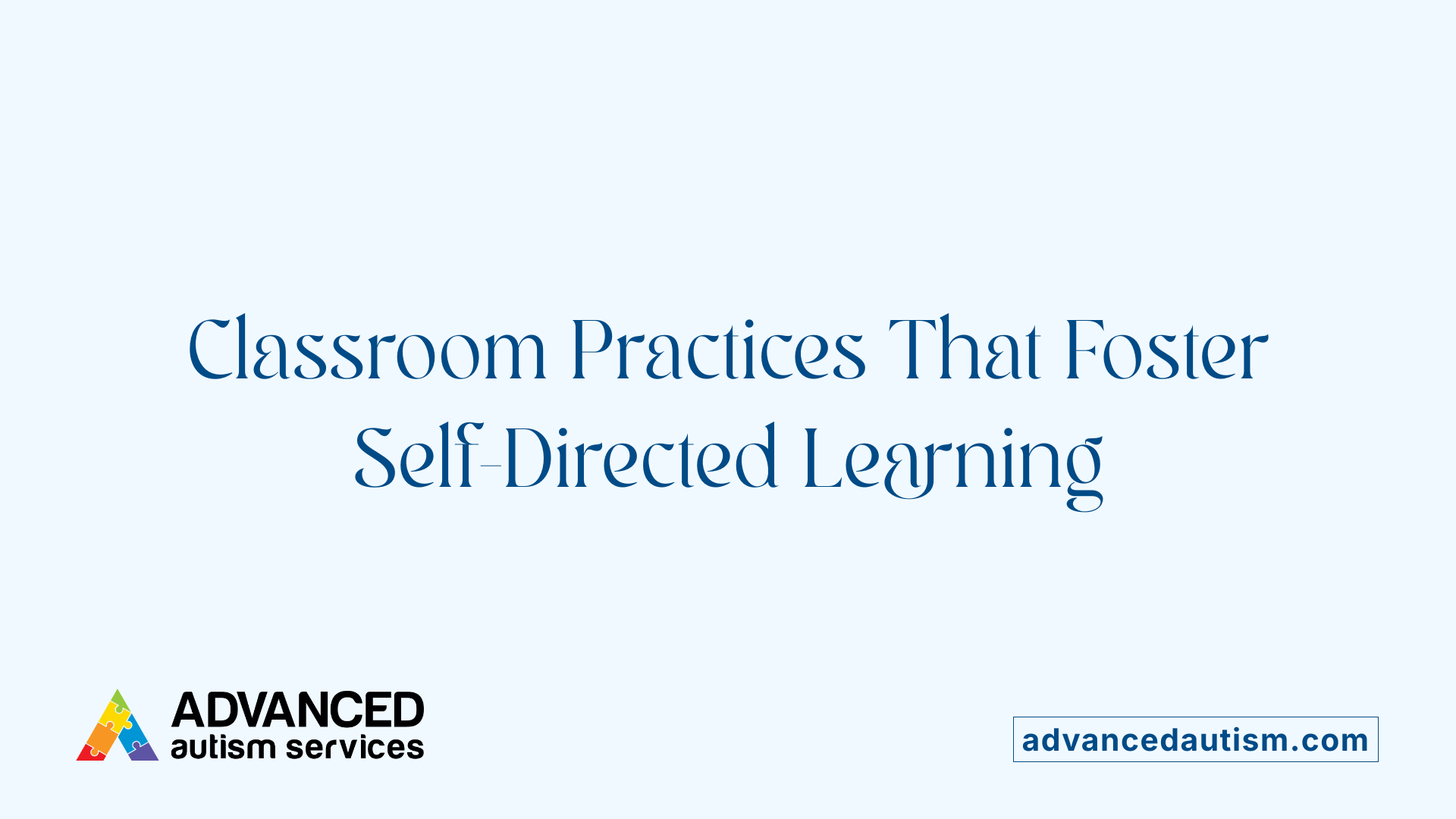
What strategies can be used to promote student independence in the classroom?
Promoting student independence requires intentional classroom practices that empower learners to take charge of their own learning. One effective approach is to establish structured routines and accessible materials that encourage self-regulation. For instance, implementing daily routines like self-monitoring checklists helps students track their skills and progress.
Providing choices in activities or learning paths fosters motivation and a sense of ownership. Students can select topics, tools, or methods that best suit their interests, which naturally enhances engagement. Additionally, involving students in lesson planning and goal-setting cultivates their autonomy and responsibility for learning.
Using questioning techniques, such as the Socratic method or prompting with yet when giving feedback, encourages reflection and a growth mindset. Feedback that begins and ends with students, focusing on their strengths and self-assessment, helps them identify their progress and areas for growth.
Incorporating tools like learning diaries, self-assessment checklists, and SMART Goals Handouts allows students to evaluate their work critically and set achievable goals. These reflective practices develop metacognitive skills, essential for independent learners.
Furthermore, peer learning and collaborative activities provide opportunities for students to teach, learn from each other, and develop problem-solving skills. Group discussions, peer teaching roles, and collaborative projects rely on student initiative and foster independence.
Ultimately, creating a supportive environment that combines clear expectations, accessible resources, and opportunities for self-directed inquiry prepares students to become confident, autonomous learners prepared for lifelong success.
Supporting Students with Diverse Needs and Promoting Inclusive Independence
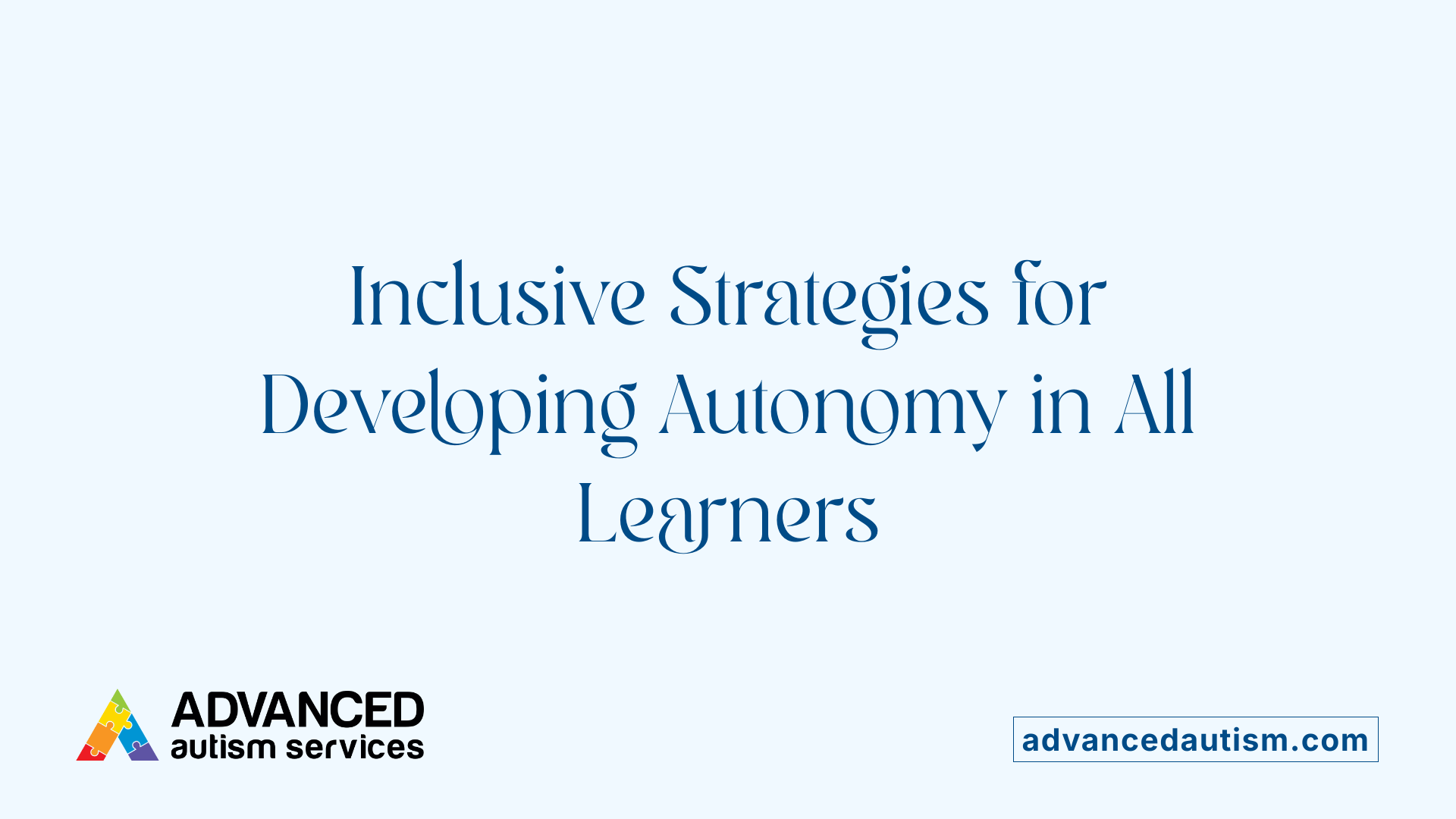
What are effective approaches for supporting students with diverse needs, including learning disabilities and autism spectrum disorder, to develop independence?
Supporting students with various needs, such as those with learning disabilities and autism spectrum disorder (ASD), requires a thoughtful combination of strategies tailored to each student’s strengths and challenges. One effective approach involves the use of visual supports and sensory modifications. Visual supports like schedules, picture cues, and graphic organizers help students understand routines and expectations, reducing anxiety and promoting autonomy.
Sensory modifications, such as designated quiet areas or sensory tools, address individual sensitivities and help students self-regulate, enabling them to engage more fully in learning and daily activities.
Incorporating evidence-based programs like TEACCH (Treatment and Education of Autistic and Communication-handicapped Children) and the Incredible Years provides structured frameworks that teach social, communication, and self-regulation skills. These programs are designed to build confidence and independence in students by fostering positive behaviors and emotional regulation.
Teaching self-determination and self-advocacy skills plays a vital role. Strategies include goal setting, problem-solving exercises, and encouraging students to express their preferences and needs. This cultivates a sense of control over their learning and daily lives.
Creating inclusive environments often involves collaboration among educators, therapists, families, and the students themselves. Multi-disciplinary efforts ensure that environmental and instructional adaptations—like accessible classroom layouts, adaptive technology, and tailored curricula—are implemented to support individual learning styles.
Overall, combining environmental adjustments, targeted interventions, evidence-based programs, and skill development initiatives fosters greater independence and equips students with the tools to navigate various settings confidently.
Developing Student Autonomy and Self-Reliance: Best Practices for Educators
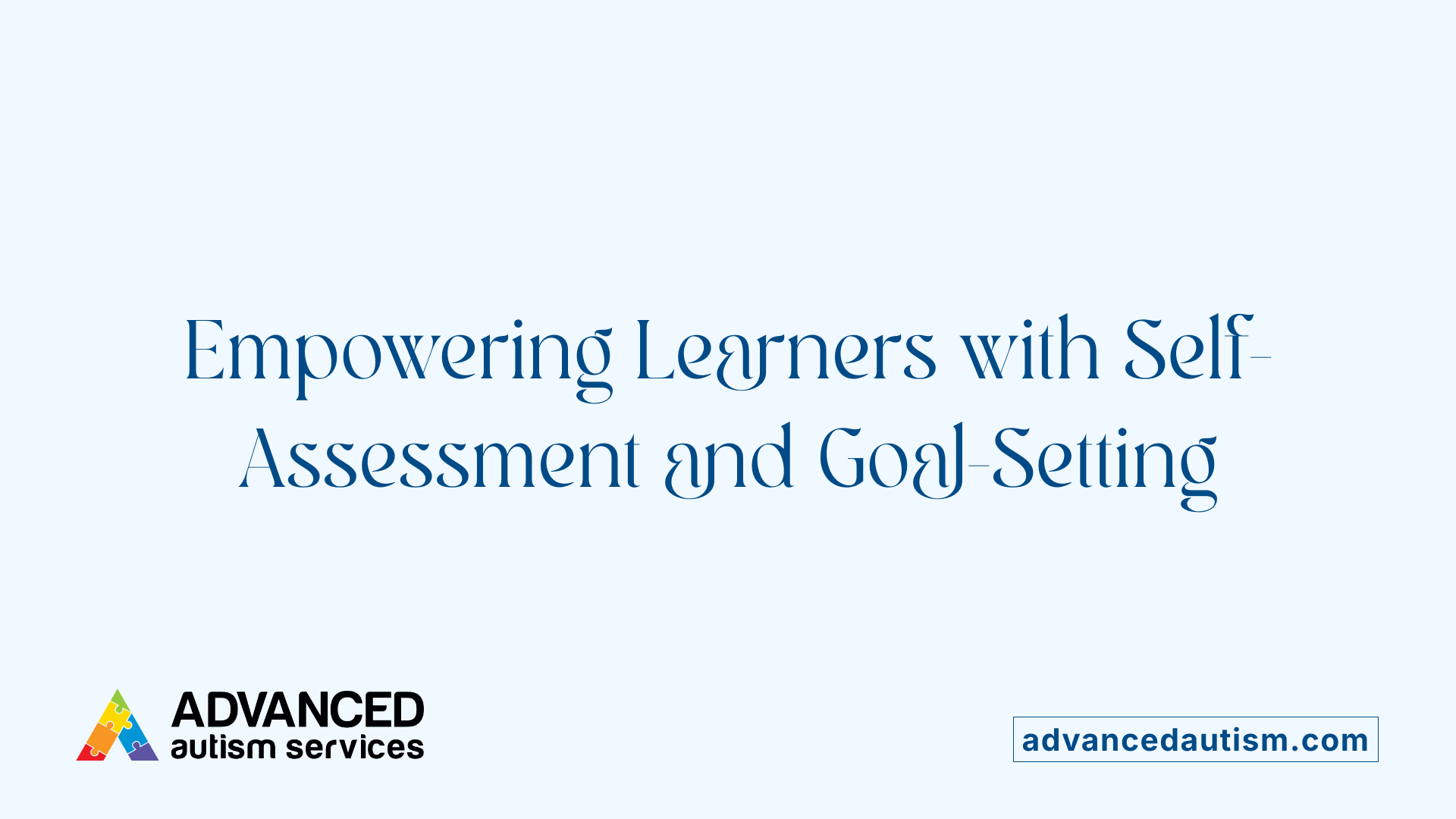
What are some of the strategies teachers can use to promote self-assessment and reflection?
Fostering independence begins with encouraging students to evaluate their own work and progress. Using standards-aligned checklists allows students to self-assess their skills and identify areas for improvement. Goals like SMART (Specific, Measurable, Achievable, Relevant, Time-bound) help students plan their learning journey proactively. Regular opportunities for self-reflection, where students compare their work against success criteria and track their growth, reinforce their ability to monitor and adjust their efforts.
How does modeling metacognitive skills benefit student independence?
Educators can demonstrate thinking processes explicitly, such as verbalizing decision-making or problem-solving steps. This modeling helps students develop metacognitive strategies—thinking about their own thinking—that they can emulate. Using tools like visual supports, hint cards, and resource files further scaffolds students’ independent learning, making strategies accessible and encouraging them to approach tasks with confidence.
In what ways can promoting responsibility and accountability support independence?
Assigning leadership roles, responsibilities, and shared chores in the classroom and at home helps students internalize the importance of responsibility. Clear routines and expectations, along with consistent reinforcement, enable students to manage their activities with less adult intervention. Encouraging students to track their own homework and chores through planners or checklists fosters a sense of ownership and accountability for their actions.
What are autonomy-supportive teaching styles, and how do they influence student motivation?
An autonomy-supportive approach emphasizes providing meaningful choices, encouraging curiosity, and respecting students’ perspectives. This style aligns with self-determination theory, promoting intrinsic motivation, persistence, and emotional resilience. Teachers who use a growth mindset language—highlighting effort and progress—further motivate students to take charge of their learning. For example, allowing students to select tasks or topics of interest makes learning relevant and engaging, which sustains motivation.
How can goal-setting and motivational strategies foster ongoing independence?
Setting clear, achievable goals with students encourages them to take initiative. Using tools like goal-setting worksheets or the SMART Goals Handout helps students plan and track their personal progress. Celebrating milestones and providing constructive, appreciation-focused feedback—including the use of yet—reinforces a growth mindset. These practices build self-efficacy, helping students see challenges as opportunities for growth and develop perseverance.
Summarized Table of Strategies for Developing Student Autonomy
| Strategy | Purpose | Implementation Examples |
|---|---|---|
| Self-assessment & reflection | Build self-awareness and monitoring skills | Checklists, success criteria, reflection journals |
| Modeling metacognition | Teach abstract thinking strategies | Think-alouds, visual supports, scaffolding tools |
| Promoting responsibility | Foster accountability | Leadership roles, chore charts, progress tracking |
| Autonomy-supportive teaching | Increase intrinsic motivation | Offering choices, respecting student voice |
| Goal-setting & motivation | Encourage initiative | SMART Goals, milestone celebrations |
Classroom Interventions and Environmental Supports to Boost Independence
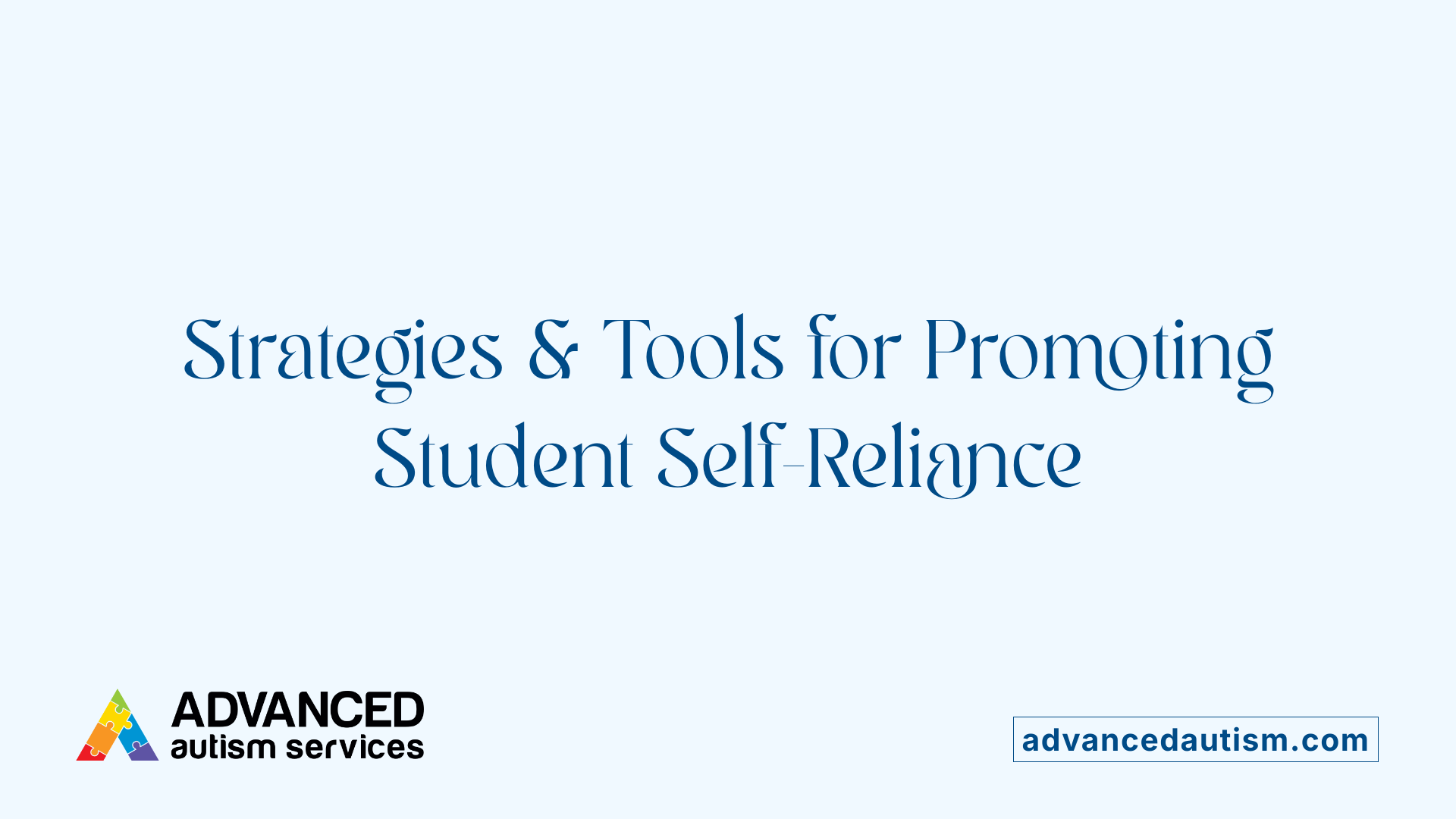
What classroom teaching practices and interventions can enhance student independence?
Promoting student independence in the classroom involves a blend of structured routines, visual cues, and supportive activities that foster self-reliance and problem-solving skills. Teachers can establish daily work routines that include independent tasks like classroom jobs, reviewing learned skills, or engaging in practical activities that encourage autonomy.
Teaching specific skills during these routines—such as organizing materials, creating to-do lists, or managing transitions—reinforces independence. Visual supports like cue cards, labeled shelves, and color-coded systems help students understand expectations and locate materials without direct adult assistance.
Implementing problem-solving tools and strategies such as the '1-2-3 Then Me' approach—in which students first attempt tasks independently or with peers, then seek help if needed—encourages persistence and self-evaluation. Using recorded directions via voice memos or resource files with troubleshooting tips and hint cards also empower students to resolve difficulties proactively.
Social-emotional activities like setting personal goals, engaging in restorative circles, and reflection exercises cultivate responsibility, self-awareness, and peer support.
Incorporating inquiry-based and personalized learning experiences, supported by scaffolding and multimodal instruction, inspires active engagement and fosters independence. The integration of technology—such as digital planners, choice boards, and communication devices—further enhances self-directed learning.
Collectively, these strategies create an environment where students develop essential skills to manage their learning process effectively, leading to increased confidence and long-term success.
Creating a Supportive Learning Environment to Cultivate Independence
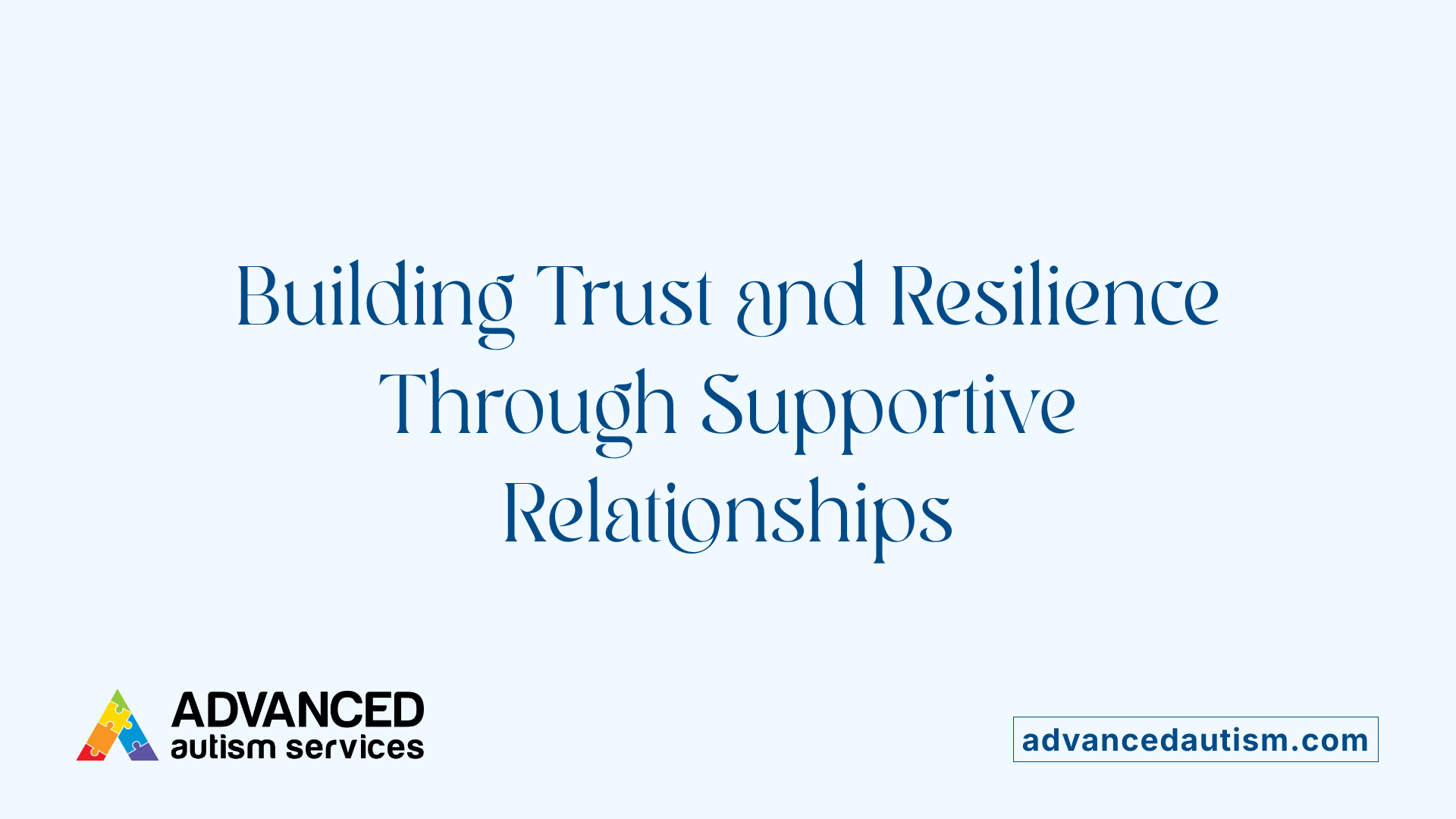
How does the educational environment, including outdoor learning, impact building student independence?
The physical and social aspects of the educational environment play a pivotal role in fostering independence among students. Outdoor learning spaces, such as forest schools, offer unique opportunities for children to engage in self-directed activities like climbing, problem-solving, and exploration. These settings promote autonomy by encouraging kids to make decisions, take risks, and learn from their own experiences.
In outdoor environments, children develop confidence and self-efficacy through hands-on tasks that require initiative and problem-solving. The natural world offers varied, real-world challenges that help students learn resilience and emotional regulation. Cooperative activities also foster social skills and peer support, essential for independent functioning.
In addition, well-structured outdoor settings with safety routines and boundaries enable children to explore freely while feeling supported. Tasks like choosing trees to climb or carrying backpacks build a sense of trust and respect from adults, which further encourages independent choices.
Overall, outdoor learning nurtures curiosity, environmental responsibility, and confidence, all crucial elements in developing lifelong independent learners. This environment helps students see themselves as capable, self-reliant, and motivated to pursue knowledge on their own.
Strategies for fostering independence in daily routines
Creating routines and expectations that are clear and consistent is fundamental. Structured schedules and visual cues, like choice boards, allow students to understand what is expected and how to manage their time.
Involving students in planning their learning activities and giving them responsibilities—such as organizing their lockers or creating to-do lists—further enhances autonomy.
Providing accessible learning materials, including visual supports and resource labels, helps students independently find and use tools they need for learning.
Implementing help-seeking structures, like signal systems (colored cups or signal cards) or designated office hours, encourages children to ask for assistance when necessary, promoting self-reliance.
Positive feedback and celebrations of small successes motivate students to continue developing independence. Recognizing efforts and growth fosters a growth mindset, encouraging resilience and perseverance.
Combining these strategies creates an environment where independence is not only encouraged but systematically supported through routines, choices, accessible resources, help structures, and positive reinforcement.
Building a Culture of Independence for Lifelong Success
Fostering independence in students requires a multifaceted approach that includes systemic support, classroom practices, tailored interventions, and nurturing environments. Schools should prioritize establishing positive relationships, encouraging self-regulation, and incorporating evidence-based strategies that foster decision-making, responsibility, and resilience. Creating inclusive, engaging, and safe environments—both indoors and outdoors—is essential for nurturing autonomous learners who are prepared to navigate the complexities of modern life. Through intentional support and ongoing development of skills, educators can cultivate confident, capable students who thrive academically and socially, laying a foundation for lifelong success.
References
- How I Encourage Independence in the Classroom
- A Way to Increase Students' Independence in Learning - Edutopia
- Achieving Independence and Mastery in School: An Open Trial in ...
- [PDF] Supporting Child and Student Social, Emotional, Behavioral, and ...
- Freedom to Fall, Freedom to Fly: Independence in the Forest School ...
- 9 Strategies for Promoting Independent Learning in Primary Schools
- Promoting Student Independence & Successful Inclusion through ...
- 5 Strategies for Fostering Independence in a PBL Classroom







